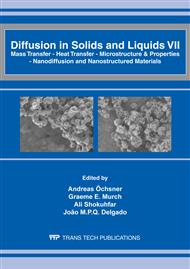p.536
p.542
p.547
p.555
p.561
p.567
p.573
p.578
p.583
Heat-Mass Transfer and Related Microstructures in TiAl-Based Alloys Directionally Solidifying in the Earth Gravity and Microgravity
Abstract:
The first results are presented of ESA MAXUS 8 sounding rocket benchmark experiment on γ-TiAl (Nb,B) intermetallics solidification, that was a part of the IMPRESS EU FP6 project. Having the aim to investigate the columnar and equiaxed primary microstructures formation at diffusion controlled melt growth, an experiment was designed applying the power-down directional solidification technique with fixing quench in automatic spaceborne furnace module TEM03-5M. Two related alloys were tested: one inoculated with boron grain refiner Ti-44Al-7.5Nb-2.7B (at.%); and the other Ti-45.5Al-8Nb (at.%) without grain refinement. The series of terrestrial reference processes has been performed accordingly in counter-gravity solidification direction. The numerical studies of heat-mass transfer, melt hydrodynamics and temporal solidification dynamics of these alloys have been implemented under the earth-and zero-gravity approximations using the GIGAN software package (IPPE). The comparison is performed of numerical model findings with the real microstructure and composition of samples, whose analyses were carried out by backscattered scanning electron microscopy (SEM) and X-ray microprobe (EDX) techniques. The convection-induced peritectic macrosegregation effect appearance and development in ground-based reference ingots is analytically observed and numerically studied. The achieved microstructure formation in space benchmarks is discussed.
Info:
Periodical:
Pages:
561-566
Citation:
Online since:
April 2012
Authors:
Price:
Сopyright:
© 2012 Trans Tech Publications Ltd. All Rights Reserved
Share:
Citation:


